Space Explorations, Science Fiction Writing, Shadow Puppet Shows: An Interdisciplinary Unit
I’ve discussed offering electives to my gifted elementary students. My group of 2nd/3rd graders chose space. It began as one would expect any study of space would begin – watching videos, visiting NASA websites, even playing some online games. They then selected planets to learn and research about. They learned basic researching skills and created a guide to their planets. This evolved into them working in pairs or trios to combine their planets to create new planets, aliens who inhabit their planet, and stories about them. In process now, they are creating shadow puppets in Tinkercad, cutting them on my Cricut machine, and fine tuning their scripts for the shadow puppet shows they performed for younger grades.
Standards Addressed
Next Generation Science Standards
- ETS1.C: Optimizing The Design Solution – Different solutions need to be tested in order to determine which of them best solves the problem, given the criteria and the constraints.
- ETS1.B: Developing Possible Solutions
Science and Engineering Practices
- Asking questions and defining problems
- Developing and using models
- Constructing explanations and designing solutions
- Obtaining, evaluating, and communicating information
ELA Anchor Standards
- Write informative/explanatory texts to examine and convey complex ideas and information clearly and accurately through the effective selection, organization, and analysis of content. (Writing Anchor 2)
- Conduct short as well as more sustained research projects based on focused questions, demonstrating understanding of the subject under investigation. (Writing Anchor 7)
- Present information, findings, and supporting evidence such that listeners can follow the line of reasoning…(Speaking/ Listening Anchor 4)
- Make strategic use of visual displays to express information and enhance understanding of presentations. (Speaking/ listening Anchor 5)
- Integrate and evaluate content presented in diverse media and formats, including visually and quantitatively, as well as in words. (Reading Anchor 7) (source: https://www.artsintegration.net/shadow-puppets.html)
NAGC (Gifted) Standards
- Creativity: The students are given the freedom to choose their own planets to research and create their own stories about them. They are also encouraged to use their imaginations to come up with new ideas for their shadow puppets.
- Problem-solving: The students are challenged to solve problems as they work together to create their new planets and shadow puppets. For example, they need to figure out how to combine their planets in a way that makes sense and how to create shadow puppets that are both creative and accurate.
- Critical thinking: The students are asked to think critically about the information they find as they research their planets. They need to evaluate the sources of their information and decide which ones are credible. They also need to think critically about the stories they create and make sure that they are consistent with the scientific facts they have learned.
- Communication: The students are given the opportunity to communicate their ideas in a variety of ways. They write reports about their planets, create presentations, and perform shadow puppet shows. This helps them to develop their communication skills and to share their knowledge with others.
Planet Exploration
Size and Distance of Planets
We began our unit by exploring through planets by size and How Big is the Solar System?.
Researching Planets
Based on initial explorations, students selected a planet to research. It started with Wikipedia and gave me the opportunity to teach them them how to:
- Skim an article using headings
- Copy and paste key passages into a Google doc
- Cite their sources by pasting in the link where they found the information
- Highlight key words

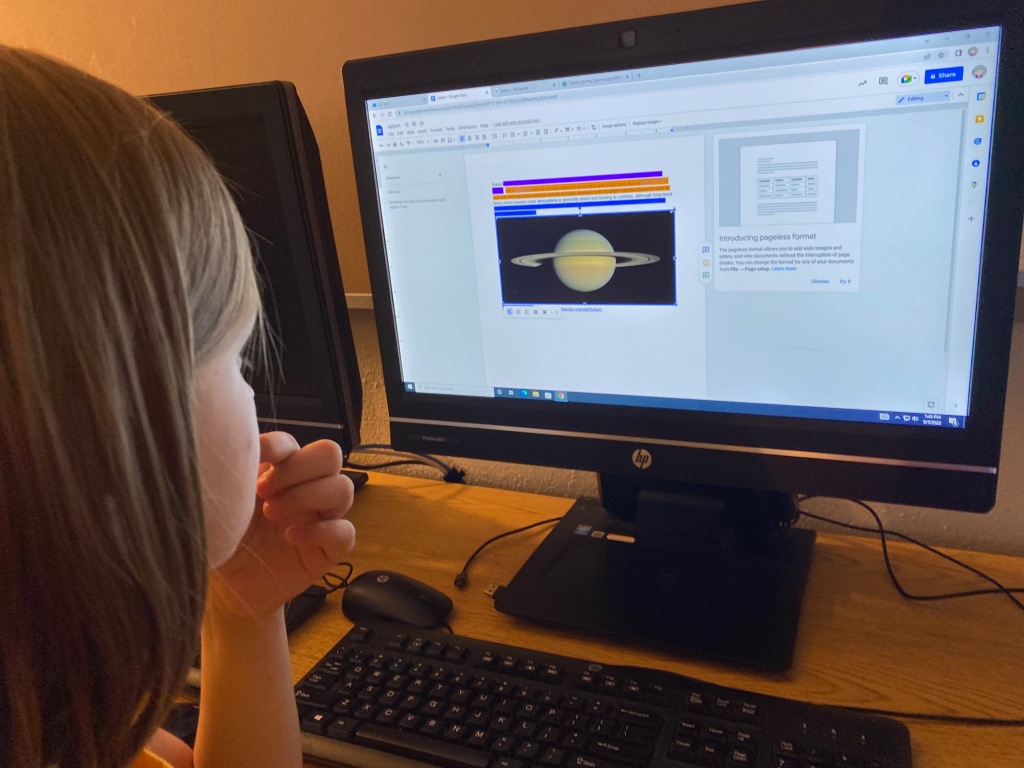
They explored more facts about their chosen planets through https://www.dkfindout.com/us/space/solar-system/ and https://www.planetsforkids.org/ adding more facts to their Google doc guides
Diving Deeper: Space Travel Guide
Students then completed Space Travel Guides for their their selected planets. These templates were found at https://www.amnh.org/explore/ology/astronomy/space-travel-guide2 (Spanish versions are available).
Some sample completed pages:
Creating New Planets
To move into story creation, students formed groups of two or three. Their first task was to combine what they learned about their original, real planets to create new fictional planets. Here is are some student examples:
One day all the planets where going around the solar system but then Jupiter and Mercury got mashed up! . Our planet’s name is Merpirter. Merpiter has 40 moons. Merpiter is the coldest planet in the Solar system about -35,500 C. degrees. The diameter of merpiter is 44,956 miles. Merpiter colors is like a brownish orange. The goddess of Merpiter is Jupas. Merpiter has big mountains.
How Vars Was Made: A star exploded In the solar system and Venus and Mars got smashed together to make Vars. How Vars got its moons: one of mars’s moons went around Vars while the other moon flew away. Terrain: the surface is half red half orange and vars has 10 volcanos.
Estimating Dimensions of New Planets
Several students included numerical facts about their planets. This gave me the opportunity to teach them about calculated averages.
Possible Vegetation and Creatures via Math Snacks’ Agrinautica
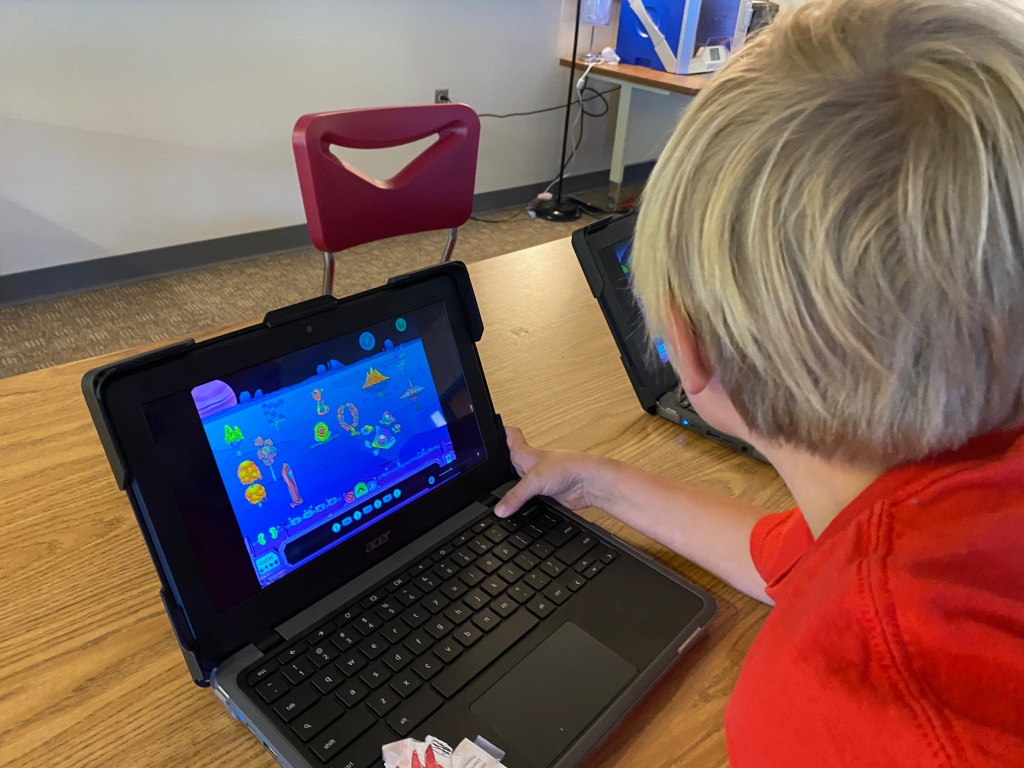

The app, Agrinautica, allows students to terraform planets by adding gorgeous plants, animals, fungi and minerals, each representing a unique mathematical expression. It s designed for 4th and 5th graders learning mathematical expression-building and order of operations, important pre-algebra skills.
I was so excited to discover this online math game. It fit perfectly into this unit and helped teach the gifted 2nd and 3rd graders some advanced math concepts.
Here is one group’s setting for their story created through this game.
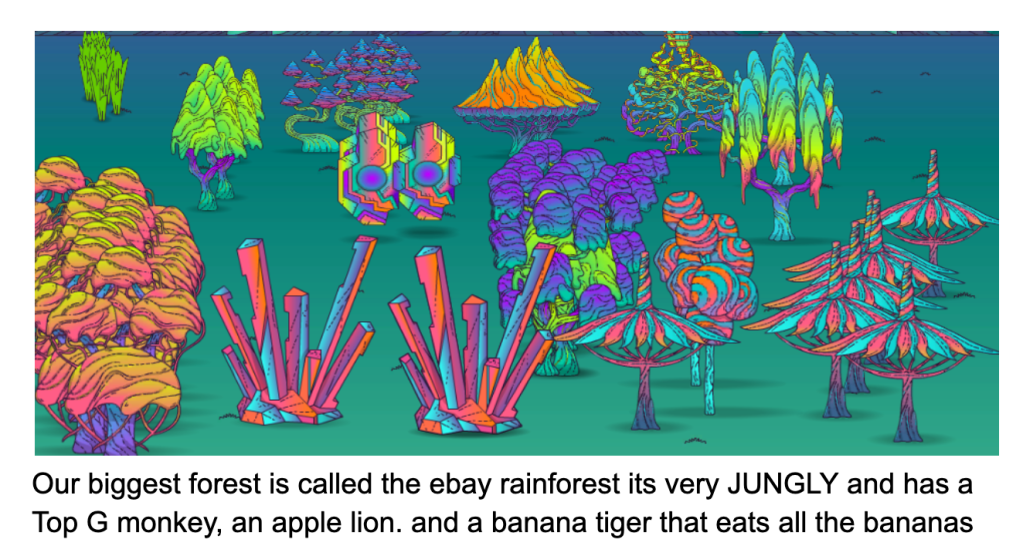
Writing Collaborative Stories
In their small groups, students wrote their stories by using the collaborative function of Storyboard That and Google docs. To begin, though, I shared a kid=friendly video (students ended up loving this) about a story arc.
Storyboard That
Storyboard That is an online storyboarding tool that makes it easy to create a digital story using both images, text, and storyboard templates. It offers a template for a story arc so it was perfect for my students. This is an example of one group’s creation.
Shadow Puppet Shows
The history and characteristics of shadow puppet shows were reviewed with the students.
Source: https://www.artsintegration.net/shadow-puppets.html
Writing Scripts
Since shadow puppet shows are often dialogue driven, lots of time was spent on creating dialogue for the different story arc events from the stories they already worked on. I realized they had some idea of the story arc, but needed some direct instruction. As such, for each event, the video above was reviewed, time was spent on writing the dialogue of that story arc event,
Creating Their Characters
They used Tinkercad to create the characters their shadow puppet shows.
I then cut their characters out using a Cricut Machine.
They then added wooden rods to the back in order to be able to move their puppets around the screen.

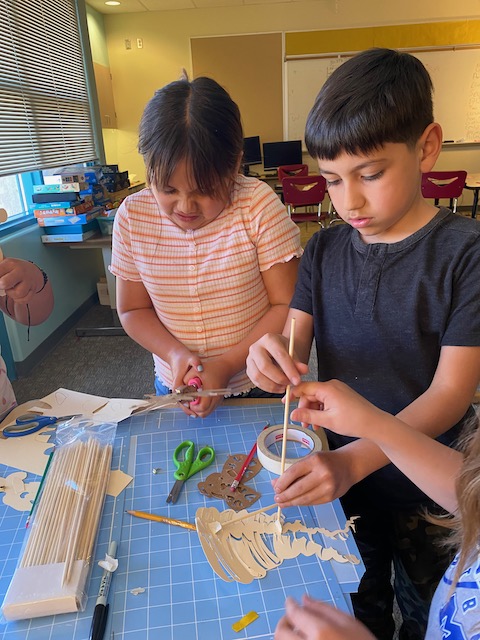
Making the Shadow Puppet Theater Screen
Directions for making the screen using a trifold (which I plan to do) can be found at http://www.pasttimeshistory.com/using-a-tri-fold-presentation-board-for-a-durable-screen/
(Note: These images are how I started teaching them about shadow puppet shows – through cutting out alien shadow puppets, showing them how to attach the rods and how to use them behind the screen.)
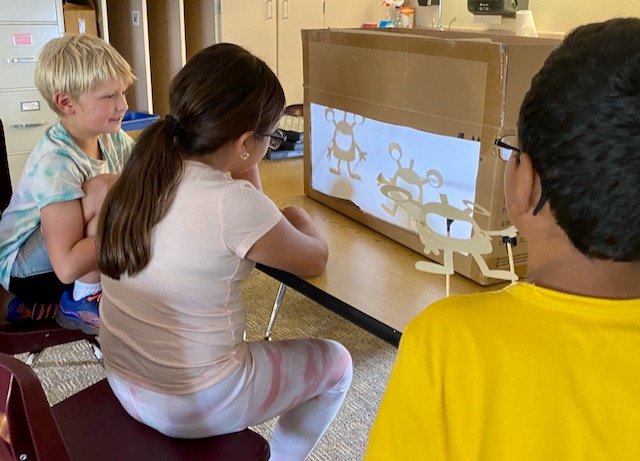

Shadow Puppet Show Performances
Students performed their shadow puppet shows for the younger grades. To introduce the puppet shows, students shared a little bit about their planets.


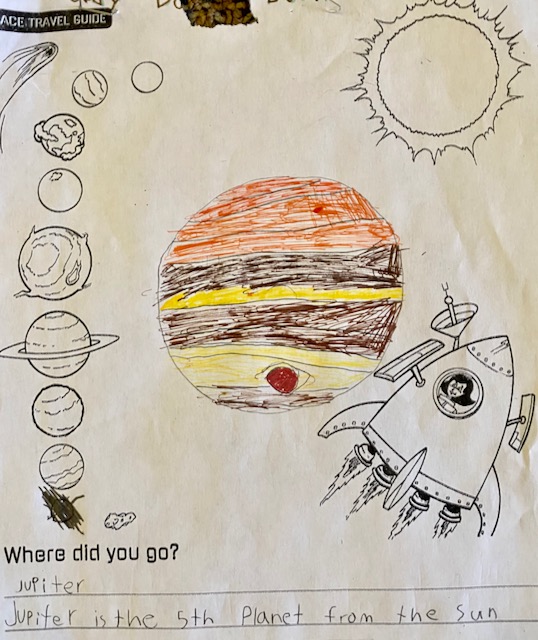



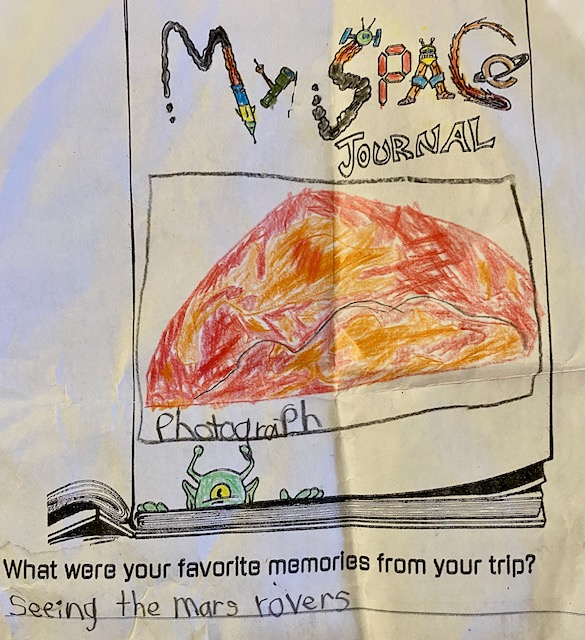






Loved looking through this! Reminds me of similar projects I have done in the past but with extra elements added! Great way to rethink and value add. Thanks Jackie!
Yvonne Harrison
April 13, 2023 at 2:40 am
Thanks, Yvonne!
Jackie Gerstein, Ed.D.
April 26, 2023 at 12:33 pm